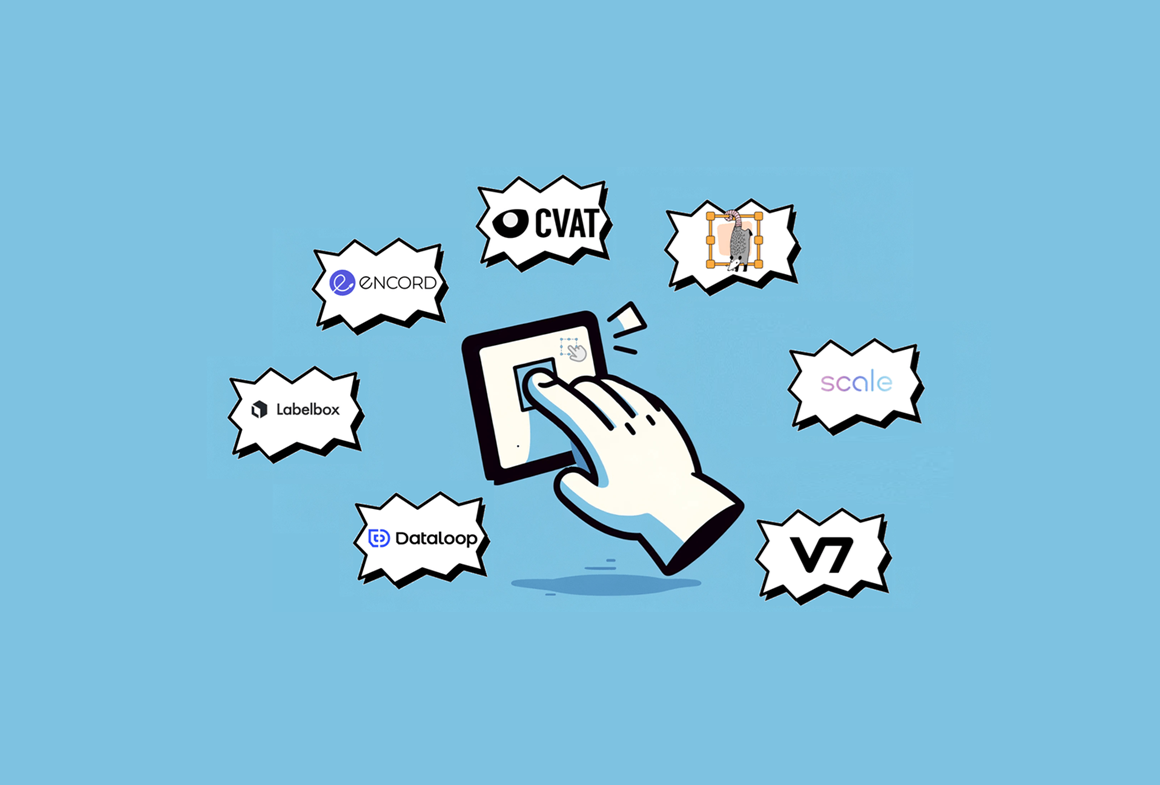SmolLM: powerful AI at your fingertips

With the rapid evolution of artificial intelligence technologies, model accessibility and portability are becoming major issues. SmolLM, developed by Hugging Face and released a few months ago, has made its mark on the language model field, offering powerful, lightweight solutions that work without relying on Cloud infrastructures or expensive compute farms. In short, it's a bit like DeepSeek before its time.
With its focus on efficiency and practicality, SmolLM promises a more flexible use of AI, enabling the full potential of Language Models to be exploited directly on local devices, without the need for costly infrastructure (GPUs, HPUs).
This new approach is transforming the way developers and businesses interact with AI, making the technology more accessible and adaptable to diverse environments. In this article, we explain how it all works!
What is SmolLM?
SmolLM is a series of language models developed by Hugging Face, designed to be both compact and high-performance. The name 🔗 SmolLM reflects its design focus on lightness and portability, as opposed to bulkier traditional language models.
SmolLM supports several languages, including French. SmolLM aims to offer comparable performance while being light enough to run directly on local devices, such as smartphones or laptops. This is clearly not the case with traditional large language models such as LLaMA 3, which require considerable computing power and often rely on the Cloud to operate.
Why is it revolutionary?
The SmolLM approach is revolutionary for several reasons. Firstly, it dramatically reduces reliance on Cloud infrastructures, saving resources, reducing costs and improving data security by limiting data transfer to remote servers.
What's more, SmolLM promotes reduced latency and increased responsiveness, essential for real-time applications or embedded systems. By making AI more accessible and adaptable to a wider range of devices, SmolLM opens up new possibilities for integrating artificial intelligence in contexts where hardware resources are limited.
This democratizes the use of advanced Language Models, enabling more developers and organizations to explore and harness the power of AI without the usual constraints of resources, infrastructure or expensive proprietary models.
The challenges of pre-trained language models
Pre-trained language models, such as LLMs, present several major challenges that deserve special attention. One of the main challenges is managing the biases inherent in training data. Indeed, LLMs are often trained on large datasets collected from the Internet, which may contain cultural, social or political biases. These biases can manifest themselves in the responses generated by the models, affecting their ability to provide fair and representative results.
Another significant challenge is the phenomenon of 🔗 "hallucinations" of AI (which are nothing more than errors or generalization problems). These are situations where language models generate responses that seem plausible but are not based on actual facts. These hallucinations can be particularly problematic in contexts where precision and veracity of information are essential, such as in the medical or legal fields.
For developers and companies alike, it is essential to recognize and manage these challenges in order to maximize the effectiveness and reliability of LLMs. This can include strategies such as regularly auditing training data, applying regularization techniques and using verification models to validate generated responses.
How does SmolLM work without using the Cloud?
SmolLM operates without recourse to the Cloud, thanks to its optimized, lean architecture, designed to run directly on local devices.Retrieval-Augmented Generation (RAG) capabilities enhance model performance by using external data to generate accurate responses. SmolLM is built to be more compact, while maintaining high performance.
This is not the case for large-scale language models, which require substantial computing power and memory, often only available on cloud servers.
What makes SmolLM so effective?
SmolLM's efficiency is based on several optimization techniques, such as quantization and compression of model parameters. These methods reduce the size of the model and decrease the amount of computation required to run it, enabling it to be run on devices with limited capabilities, such as smartphones, laptops, or even some microcontrollers.
By optimizing these processes, SmolLM consumes less energy and generates less latency, making it ideal for real-time applications or tasks requiring rapid response.
What's more, the fact that SmolLM can operate locally enhances data confidentiality and security, as processed information is not sent to remote servers. This represents a considerable advantage for companies and developers keen to protect their users' sensitive data while offering personalized, high-performance experiences.
How does SmolLM differ from other LLM language models?
SmolLM stands out from other large-scale language models (LLMs) thanks to its lean design and its focus on local use, without relying on cloud infrastructures. Whereas traditional language models, such as GPT-4 or other large models, require massive computing power and storage resources, SmolLM is designed to be much more compact and efficient, while offering comparable performance.
Key differences between SmolLM and other LLMs include:
Size and efficiency
SmolLM is optimized for lightweight operation on devices with limited resources. It uses compression and model size reduction techniques, such as quantization and model distillation, to reduce complexity without sacrificing the quality of results. This approach enables SmolLM to run efficiently on devices such as smartphones, laptops and even microcontrollers.
Cloud independence
Unlike other LLM models that rely heavily on the cloud for processing and hosting, SmolLM is designed to run directly on local devices. This independence from the cloud reduces latency and improves application responsiveness, while reducing operating costs and increasing data security.
Open Source access and deployment
SmolLM is often developed within an open source framework, making it easily accessible and modifiable by the developer community. This openness enables rapid adoption, easy customization and continuous improvement through external contributions, facilitating collaborative innovation.
Adaptation to confined environments
SmolLM is specifically adapted to environments where computing and energy resources are limited. Unlike the giant language models developed by companies such as Google and Apple, which require dedicated infrastructure, SmolLM can be deployed in embedded systems or low-power devices, opening up new prospects for AI in areas such as the Internet of Things (IoT) and mobile technologies.
What types of training and fine tuning are used to optimize SmolLM models?
SmolLM models are optimized through a combination of advanced training techniques designed to maximize efficiency while reducing complexity. These techniques include, 🔗 model distillation is often used to transfer knowledge from a large language model to a smaller one, without sacrificing its performance.
Quantization methods also enable model parameters to be compressed, thus reducing size and computational requirements. In addition, specific fine-tuning strategies are applied to adapt SmolLM to specific tasks, while taking into account local device constraints.
These different trainings ensure that SmolLM remains high-performance, even on devices with limited resources, while meeting the requirements of modern AI applications. For example, thanks to its specific training, SmolLM is able to generate high-quality posts, helping companies automate their content strategy on social networks like Instagram or Twitter (X).
The biases and limits of AI
The 🔗 biases and limitations of AI are paramount aspects to consider to ensure the ethical and effective use of these technologies. LLMs, for example, can reflect biases present in training data, which can lead to discriminatory or unfair results. It is therefore essential to develop strategies to identify and mitigate these biases.
One approach to reducing bias is fine-tuning language models using specific, carefully selected data sets. This technique enables models to be better aligned with end-users' needs and values. In addition, regularization methods can be applied to limit model complexity and prevent over-fitting to biases present in the training data.
It's also important to recognize the limitations of LLMs in terms of contextual understanding and intent. Although these models are capable of generating impressive responses, they can sometimes lack nuance or depth of understanding. Consequently, constant vigilance and critical evaluation of AI-generated results are required to ensure their reliability and relevance.
How does SmolLM fit in with Hugging Face's AI strategy?
SmolLM is part of the 🔗 Hugging Face strategy for AI as a key element aimed at democratizing access to language models and making artificial intelligence more accessible, inclusive and adaptable.
Hugging Face has always positioned itself as a leader in the development of open source language models and in the creation of tools that facilitate their use by a large community of developers, researchers and companies.
SmolLM meets this objective by providing innovative, lightweight solutions for resource-constrained environments. Here are some of the ways in which SmolLM aligns with Hugging Face's global strategy:
Accessibility and democratization of AI
Hugging Face seeks to make artificial intelligence accessible to all types of people, regardless of an organization's size or resources. SmolLM enables users to deploy powerful language models directly on local devices, without the need for costly cloud infrastructure. This accessibility encourages the adoption of AI by small businesses, startups and even individual developers.
With this in mind, Hugging Face has created SmolLM in different model sizes to suit the needs of each user. Here are the architecture specifications for each size:

Open Source and collaborative innovation
Hugging Face's commitment to open source is at the heart of its strategy, and SmolLM embodies this philosophy perfectly. By making lightweight language models and their tools available to the community, Hugging Face encourages collaborative work, customization and rapid innovation. This enables the community to constantly improve SmolLM and develop new applications tailored to specific needs.
Scalability and mobile adaptation
SmolLM represents a breakthrough in Hugging Face's ability to offer AI solutions suitable for mobile devices and embedded systems. By developing language models that can run efficiently on smartphones and other local devices, Hugging Face is positioning itself at the forefront of mobile AI, a fast-growing field with increasing demand for real-time and field applications.
Reduced dependence on the Cloud
Hugging Face anticipates a future in which AI will not depend solely on cloud infrastructures. With SmolLM, they take this vision a step further by enabling enterprises and developers to manage language models locally, reducing latency, costs and data privacy concerns. This aligns with their strategy to create more ethical, user-friendly AI.
By integrating SmolLM into its strategy, Hugging Face aims not only to maintain its leadership in language models, but also to broaden AI adoption beyond large enterprises and data centers. This approach reflects their commitment to making AI more inclusive, adaptable and forward-looking.
Conclusion
SmolLM embodies a major breakthrough in the field of language models, combining power and lightness in an approach resolutely focused on accessibility and efficiency. By enabling high-performance models to be deployed directly on local devices, without dependence on the cloud, SmolLM opens up new perspectives for artificial intelligence, both in mobile applications and in constrained environments.
As part of Hugging Face's strategy for more open, collaborative and inclusive AI, SmolLM is helping to transform the way developers and businesses interact with technology.
This model promises to further democratize access to cutting-edge AI solutions, while fostering continuous community-driven innovation. SmolLM is not just a step towards lighter AI, it's a vision for a future where artificial intelligence is accessible to everyone, everywhere.





